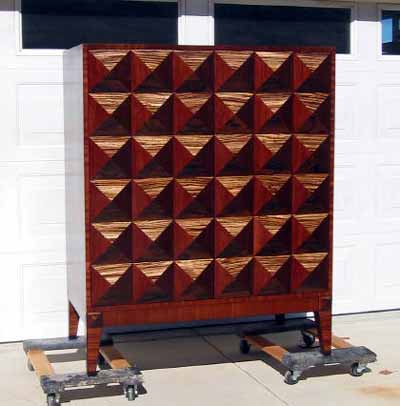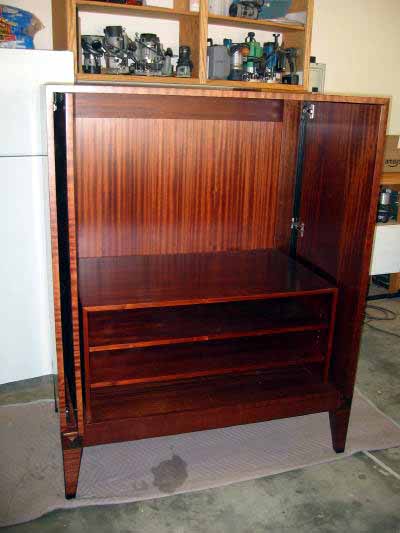It has been a while since I have put any work up on Woodnet
and I thank those of you that have sent PMs asking where the
heck I have been. I have just been damn busy!
This TV armoire is a commissioned piece
that is 100% veneered.
The carcase is done in qtr sawn sepele,
and each door is done with 36 "pyramids" of Zebra, Peruvian
Walnut, Ziracote, and Jarrah.
This unit measures 48 1/2 inches wide, 62 1/2 inches tall,
and 27 inches deep.
The edges of each carcase panel, the doors, the aprons, and
legs are veneered with the ribbon grain of the sepele being
cross banded.
The designer and clients spent three weeks sorting through 63
pieces of exotic wood samples to come up with final choice.
I have 250 hours of shop time in this piece.
This shot shows the inside of the cabinet with the doors opened
and slid back into their pockets.
|


|
|



